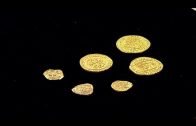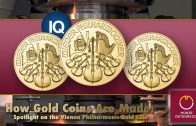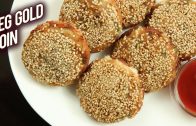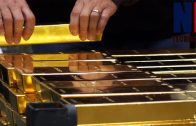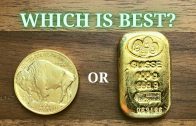How to Calculate Premiums on Gold Coins
A question we’re often asked by our customers is “What is a Premium? In this video we explain what a premium is and how to calculate a premium when buying gold coins. This information will enable you to achieve the best deal for your money.
For our full range of websites visit – http://www.chards.co.uk/
We also have a free Investing in Precious Metals guide that can be downloaded when you signup to our newsletter – http://www.chards.co.uk/newsletter-free-guides/
To browse our gold products and find out more information about investing, buying and selling gold visit http://taxfreegold.co.uk/
Video Script
Hi, I’m Lynne, welcome to Chard TV.
A question we are often asked by our customers is: “What is a premium?”.
If we use gold as our example, quite simply it’s the difference between the intrinsic value of the gold content in the coin and the final price you pay.
A premium can be expressed as an amount or a percentage but in our experience, a percentage is the most useful .
Especially when making comparisons between the various coins or dealers.
On most of our gold bullion pages we give a table which shows the premium for the coins and the various quantities. This amount is included in the final price but is shown so customers can make a comparison.
If we take a one ounce Krugerrand, as an example and for ease of calculation, if we use a spot price of a thousand pounds, then the value of the gold in that coin would be one thousand pounds.
If the final price was one thousand and fifty five pounds then the premium would be £55. £55 pounds above the intrinsic value of the gold in the coin.
We can express this another way, as we’ve said before, a 5.5 percent. Where does this extra amount or premium come from and why do coins which contain exactly the same amount of gold come to a different price?
There’s a variety of reasons. This extra amount can come from manufacturing, distribution and marketing costs. The level of the coin’s availability versus its popularity. In other words, supply and demand and price increases from manufacture as the coin travels along the distribution chain.
Smaller coins, fractional sizes, and coins which are harder to produce often command higher premiums as do the rarer coins or coins with a numismatic interest.
Manufacturing costs differ between countries, an example being China.
The Chinese Panda often has a higher premium, than say, the Krugerrand or other popular bullion coins, as the Chinese mint have a higher premium and this is then passed along the chain.
We can have a look at some popular coins and compare the premiums which should help when you’re deciding how to get the best from your investment.
If we again use a spot price of the thousand pounds and look at the percentage premium over gold, it’s quite easy to compare and help when deciding how best to invest.
Our standard advice is look for the best value, go for the lowest premium, within reason, and instead of comparing prices, compare premiums.
It’s also worth remembering the factors that should be taken into consideration for when you’re thinking about selling.
There’s the fluctuating gold price. Is your product easily available and easily sold?
What percentage below or above spot are likely to receive when you sell your investment?
Are you clearly looking at it from the investing point of view? Or are you looking at it from a collecting or numismatic point of view? If the latter is the case, then that’s another video.
Thank you for watching our video today, I hope you’ve enjoyed it. If you require more information, or have any questions, please visit our website or subscribe to our newsletter.
Call us or visit us in our new showroom, we’d love to see you. Follow us on Twitter, Facebook or YouTube for more videos.
Thank you and goodbye.

